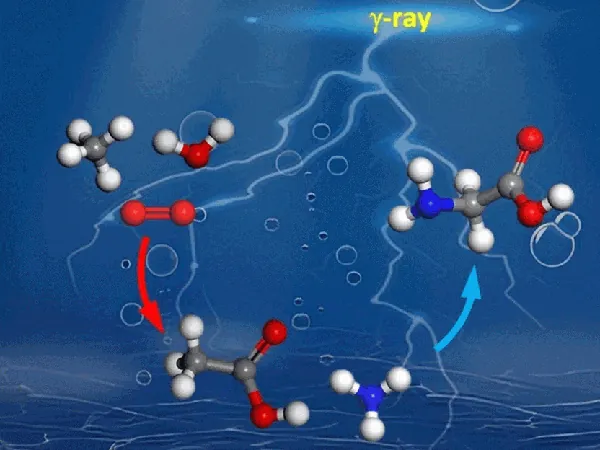
Could Interstellar Methane Be the Key to Creating Amino Acids? Groundbreaking Research Reveals Cosmic Secrets!
2024-11-08
Author: Liam
Introduction
In a fascinating study led by Weixin Huang at the University of Science and Technology of China in Hefei, researchers have made strides in understanding how complex organic molecules, possibly the building blocks of life, could form in the vast expanse of the universe. The team’s findings suggest that methane (CH4), found abundantly in the interstellar medium, may play a crucial role in the prebiotic chemistry that potentially led to amino acids.
The Role of Energy in Chemical Reactions
Gamma rays and high-energy photons, frequently emitted in cosmic rays and during the decay of unstable isotopes, serve as a critical energy source. Huang points out that these energies can trigger chemical reactions in the simple molecules embedded in icy mantles found on interstellar dust and ice grains. This revelation hints at the possibility that life’s essential components may have originated in outer space long before they arrived on Earth.
Innovative Experimental Approach
Most current studies of these cosmic processes typically simulate reactions at extremely low temperatures and in a vacuum, reflective of conditions in space. However, the innovative approach taken by Huang's team involved studying methane reactions at room temperature, both in gaseous and aqueous phases, under the influence of gamma radiation from a cobalt-60 source.
Striking Experimental Outcomes
The outcomes of their experiments were striking. In pure methane, the reactions produced small amounts of ethane, propane, and hydrogen. However, when oxygen was introduced, the conversion rate increased significantly, primarily yielding carbon dioxide and ethylene alongside water. Remarkably, when methane was irradiated in the presence of water, it produced acetone and tertiary butyl alcohol. If ammonia was also included in the mix, acetic acid could transform into glycine—an amino acid known to exist in space.
Implications of the Findings
“Our experiments demonstrate that glycine can indeed be produced from methane, oxygen, water, and ammonia under gamma radiation, all of which are abundant in space,” explains Huang. The team’s research outlines a comprehensive scheme detailing how various products emerge from these reactions, heavily influenced by radicals such as oxygen (O2−) and hydroxyl (OH). Notably, these reactions are not constrained by temperature, suggesting that similar processes could indeed occur in the cosmic environment.
Importance of Solid Particles
The research also highlighted the impact of solid particles that constitute interstellar dust—like silicon dioxide and iron oxide—on the selectivity of methane conversion. Specifically, silicon dioxide improved the production of acetic acid from methane. Huang emphasizes that utilizing gamma radiation is a safe and sustainable energy source, presenting new avenues for leveraging methane as a raw carbon material that can be converted into valuable products under milder conditions—a significant hurdle for industrial synthetic chemistry.
Conclusion
This pivotal study not only deepens our understanding of the cosmos but also opens up a realm of possibilities for advancements in chemistry that could have profound implications for both space exploration and the quest to understand the origins of life itself. What other cosmic secrets await discovery? Stay tuned!









 Brasil (PT)
Brasil (PT)
 Canada (EN)
Canada (EN)
 Chile (ES)
Chile (ES)
 España (ES)
España (ES)
 France (FR)
France (FR)
 Hong Kong (EN)
Hong Kong (EN)
 Italia (IT)
Italia (IT)
 日本 (JA)
日本 (JA)
 Magyarország (HU)
Magyarország (HU)
 Norge (NO)
Norge (NO)
 Polska (PL)
Polska (PL)
 Schweiz (DE)
Schweiz (DE)
 Singapore (EN)
Singapore (EN)
 Sverige (SV)
Sverige (SV)
 Suomi (FI)
Suomi (FI)
 Türkiye (TR)
Türkiye (TR)